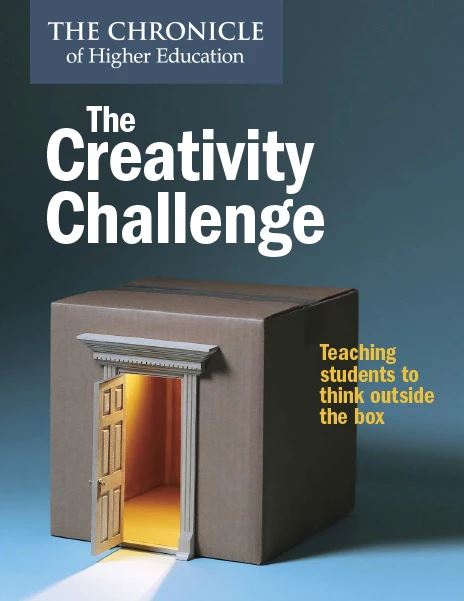?
?
?
(If you read 20 Ways to Be a Virginia Western Superhero, you probably know already!).
?
?
?
Answer: Creativity … followed by persuasion, collaboration, adaptability, and time management (source: LinkedIn).
But I don’t need a LinkedIn employer survey to tell me creativity matters.
I’ve known this most of my life. Fostering a creative environment was the topic of my master’s thesis … and a subject I read about for fun. Now I’m approaching creativity as the parent of a 6-year-old who is just starting her academic journey.
This is why the Innovation Grants awarded by VWCC’s Educational Foundation are my favorite grants to talk about. My goal isn’t just to increase the number of funded grant proposals, but to promote creative thinking every day.
But how do we teach creativity? Is that even possible?
Just as I learned of the LinkedIn employer survey, the Chronicle of Higher Education released a special report: The Creativity Challenge: Teaching Students to Think Outside the Box, which also cites the same survey.

Thanks to the help of Dale Dulaney and the Brown Library, we were able to purchase this report. The Creativity Challenge explains why creativity matters, and, most importantly, it showcases colleges that are trying to cultivate creativity through coursework.
A program close to home was among the five case studies: James Madison University, which offers project-based learning courses through its interdisciplinary X-Labs program (https://jmuxlabs.org/). However, the report does not include examples at community colleges (I even emailed the reporter, who said she was unaware of any so far).
If I had to distill the most important takeaways, it would be this list, lifted directly from the special report:
How professors can foster students’ creativity:
- Have students work on complex, open-ended problems
- Let students collaborate, ideally across disciplinary lines
- Give students ownership over their work
- Encourage students to come up with lots of ideas, and to work through different iterations of an answer
How college leaders can foster students’ creativity:
- Reduce barriers and provide incentives for students — and professors — to work across disciplinary lines
- Provide opportunities for students to take risks and fail without penalty
- Encourage and recognize teaching practices that ask students to synthesize material and create something new
- Make sure that programs designed to support creativity are available to all students, not just a select few.
I would be happy to share the full report by request … it’s a quick read. Email sseagle@virginiawestern.edu.
— Stephanie Ogilvie Seagle, February 2020






 Shelley Lyons is glad to be back on campus as she is a Virginia Western alum, and has served as the Administrative Officer for Grants Administration at Virginia Western since early 2022. Prior to VWCC, her career focus was within the Human Services and Arts fields. She wrote her first grant in 1996 on a whim and has continued to plan and learn since that time. She most enjoys seeing a well-planned project come to fruition, where funder, project manager and beneficiaries can all feel success and see impact.
Shelley Lyons is glad to be back on campus as she is a Virginia Western alum, and has served as the Administrative Officer for Grants Administration at Virginia Western since early 2022. Prior to VWCC, her career focus was within the Human Services and Arts fields. She wrote her first grant in 1996 on a whim and has continued to plan and learn since that time. She most enjoys seeing a well-planned project come to fruition, where funder, project manager and beneficiaries can all feel success and see impact.